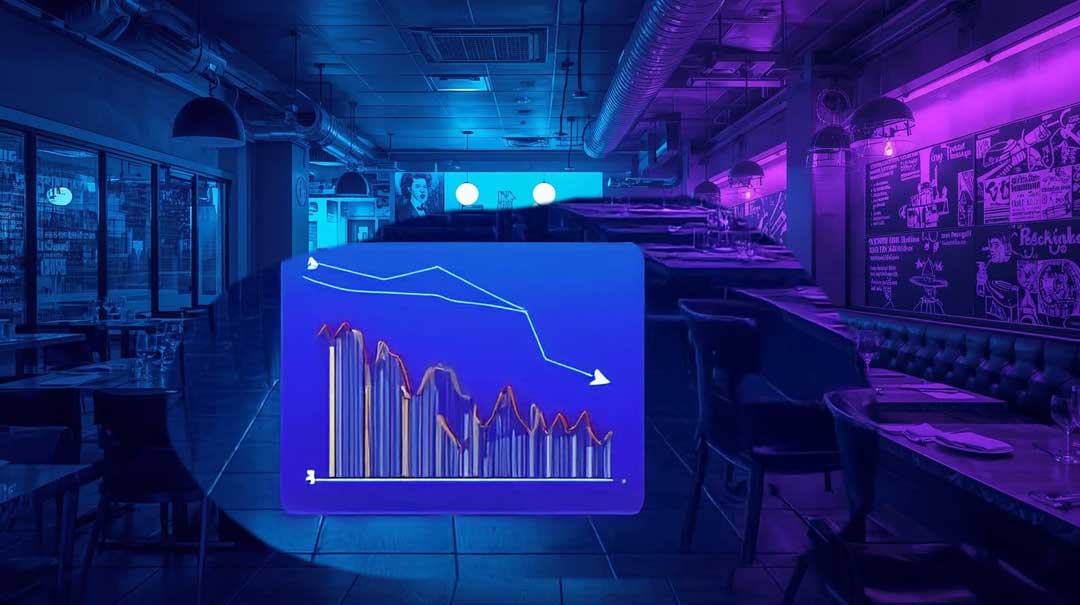Restaurant revenue often takes a hit long before owners realize what is happening. The truth is, profits can slip quietly when simple SEO errors pile up behind the scenes. These mistakes block diners from finding your business online and undermine the growth you work so hard to build. Strong search visibility drives hungry customers to book tables, place takeout orders, and discover new menu items. But even the best food cannot overcome the problems caused by invisible digital obstacles.
You would be surprised how often restaurants overlook foundational SEO elements that directly influence customer discovery. Weak local optimization, duplicate menu content, poor mobile design, unoptimized images, inconsistent NAP information, missing schema markup, and slow page load speeds are some of the most common issues. Many of them are easy to fix, yet they quietly drain traffic for months.
At the end of the day, correcting these problems starts with the basics. The first step is strengthening your local search presence with the right SEO strategies for restaurants, making sure diners in your area can find you without searching endlessly.
Ignoring Local Search Optimization Basics
Many restaurants underestimate just how important local search optimization is for long-term revenue. It sounds simple, but skipping the basics is one of the quickest ways to stay buried below competitors in your area. When customers search for a place to eat, they expect accurate information, engaging details, and an easy path toward booking or ordering.
Let’s look at a few simple but common issues.
- Missing Essential Information: Diners often check business listings for hours, directions, or quick menu highlights before making a decision. According to the National Restaurant Association, customers become frustrated when this information is missing or outdated. If guests feel misled, they move on immediately and rarely come back.
- Failing to Showcase Specials or Discounts: Over half of all local searches focus on finding deals or offers nearby. That figure comes from Uberall via Search Engine Land. When Happy Hour, seasonal dishes, or limited-time promotions are not listed on your website or Google Business Profile, you lose potential customers who are actively looking for those options.
- Ignoring Online Reviews and Feedback: About 58% of people check reviews before deciding where to eat. That comes from the National Restaurant Association as well. If reviews go unanswered or negative comments stay unresolved, diners start to doubt the overall experience. Google’s ranking systems also take review activity into account, which means ignoring feedback hurts visibility over time.
Restaurants using SEO strategies for restaurants typically see more engagement, more clicks, and stronger brand trust because they show potential customers a consistent and reliable presence.
Missing or Duplicate Menu Content Issues
Neglecting menu content seems harmless, but it creates confusion that affects both search visibility and sales. When digital menus are inconsistent or incomplete, customers lose confidence and leave before placing an order. Let’s be honest, people depend heavily on online menus to feel prepared before spending money at a new place.
- Confusion from Missing Menu Items: If signature dishes are missing from digital menus, customers may assume they are unavailable and look elsewhere. Instead of calling to check, they usually abandon the process entirely.
- Duplicate Dishes Create Doubt: It is surprisingly common to see the same item listed twice with different descriptions or prices. That inconsistency generates doubt, and diners may question the overall accuracy of your menu. Once trust is broken, conversions drop.
- Lack of Detailed Descriptions Reduces Search Traffic: Search engines favor descriptive, unique content. Google Search Central highlights that pages with repetitive or thin descriptions lose indexing priority. Without specific wording, fewer customers find your dishes through organic search.
- Inconsistent Pricing Hurts Credibility: Prices that vary across platforms create confusion and deter new visitors who expect transparency when ordering online. Restaurant Hospitality Magazine reports that mismatched pricing is one of the top frustrations customers have when browsing menus.
Fixing these menu issues sets a strong foundation for consistent visibility across every ordering channel.
Overlooking Mobile User Experience Essentials
Mobile user experience directly influences restaurant profits, yet many sites still function poorly on smartphones. This is a major problem because Google data shows that more than 65% of food-related searches begin on mobile devices. A mobile-friendly site is no longer optional.
Short delays or poor design choices discourage visitors before they even see your menu.
- Slow Page Loads: A two-second delay can reduce conversions by up to 7%. This is based on data commonly cited by performance benchmarks across multiple industries. People simply do not wait for pages to load when they are hungry.
- Unclear Calls-To-Action: Diners expect easy-to-tap buttons for reservations, online orders, or delivery options. When these actions require too many clicks, they give up and try another restaurant.
- Poor Navigation and Visual Issues: Crowded layouts, low-quality photos, or confusing menu categories make the user journey stressful. According to The Coffer Group, restaurants that invest in real-time mobile UX improvements see major gains in customer engagement.
Bad mobile experiences add up. Each small inconvenience pushes potential guests away, often without any warning signs until revenue dips.
Failing to Optimize Images for Search Engines
Optimizing mobile UX is essential, but unoptimized images often create an equally damaging problem. Images heavily influence both user experience and SEO for Restaurants, yet they are rarely optimized correctly. You would be surprised how many restaurant websites rely on massive photos that slow everything down.
- Bloated File Sizes: Large images can slow loading times by nearly 40%. Search engines reward fast pages, so oversized photos push your rankings down.
- Missing Alt Text: Search engines cannot read images, so they rely on alt text to understand what is being shown. Skipping these details means your dishes will not appear in Google Images or in certain types of voice search.
- Incorrect File Names: Generic file names like “IMG_4021” provide no context for crawlers. Renaming images with descriptive phrases that include cuisine type or dish names improves your chances of being discovered.
This is one of the easiest technical wins restaurants can claim, yet it often gets ignored until a full site audit reveals what went wrong.
Neglecting Consistent NAP Across Platforms
NAP stands for name, address, and phone number. Consistent NAP data across all platforms is essential for local SEO, yet it is constantly overlooked. Something as minor as using “Ave.” in one directory and “Avenue” in another introduces doubt for both search engines and customers.
BrightLocal reports that nearly 70% of consumers avoid businesses that have incorrect contact information online. That is a massive loss for something so preventable.
Inconsistent NAP data also weakens Local Pack placement because Google uses these signals to confirm business legitimacy. When your details vary, Google treats each version as a separate entity instead of recognizing one unified restaurant.
The fix is simple. Maintain a master spreadsheet listing all public details, including primary and secondary categories, and check every quarter for accuracy. Assign one staff member the responsibility for keeping these records updated.
Underutilizing Schema Markup for Menus
Schema markup helps search engines understand your website’s content, particularly menus. Many restaurants underuse or completely ignore this valuable tool. This oversight limits how your offerings appear in search results.
Here is why it matters.
- Important Items Go Unnoticed: Without a proper schema, Google may not detect your specialty dishes or updated menu sections. When diners search for specific cuisine types, your restaurant risks being overlooked.
- Reduced Visibility and Lower Click-Through Rates: Structured data often triggers rich snippets that stand out visually in search results. Search Engine Journal reports that rich snippets can increase click-through rates by up to 30%.
- Outdated Markup Can Be Penalized: Google updates schema standards regularly. Using outdated tags risks being ignored or flagged for low data quality. SEO Vendor provides white-label support to ensure schema remains current and accurate year-round.
When the schema is implemented properly, menu details display directly in search results, giving diners a faster path to choosing your restaurant.
Allowing Slow Page Speed to Persist
Slow page speeds continue to be one of the biggest and most damaging SEO issues for restaurant websites. Google research shows that a one-second delay can cut conversions by up to 20%. That alone should raise concern.
Faster sites convert better. SEO Vendor data shows that restaurant sites optimized for speed convert visitors up to three times more than slow-loading competitors.
Some guests interpret slow speeds as a reflection of the restaurant itself, which is never a good sign. Core Web Vitals score these user experiences directly, influencing how high or low pages appear in results.
Tools like PageSpeed Insights identify exactly where the problems lie. Updates such as compressing images, reducing excess code, and adding lazy loading often lead to immediate improvements.
If competitors upgrade their speed regularly and you do not, your rankings slowly deteriorate. These declines can be subtle, but they are difficult to reverse without strategic intervention.
Why These Errors Slowly Destroy Restaurant Profitability
On the surface, many of these SEO issues seem minor. A missing review response here, a duplicated menu item there. But each one contributes to reduced search visibility, fewer clicks, and fewer customers walking through the door.
Invisible errors create real consequences:
• Lower website engagement
• Fewer bookings and online orders
• Higher bounce rates
• Lost trust with diners
• Decreased visibility in local search
Restaurants that consistently maintain technical SEO, local listings, mobile UX, and structured data outperform competitors because they remove barriers that diners face every single day.
If you want your restaurant clients to stand out where diners make decisions first, explore how our solutions at SEO Vendor can help elevate their results: https://seovendor.co/food-and-beverage-seo/









